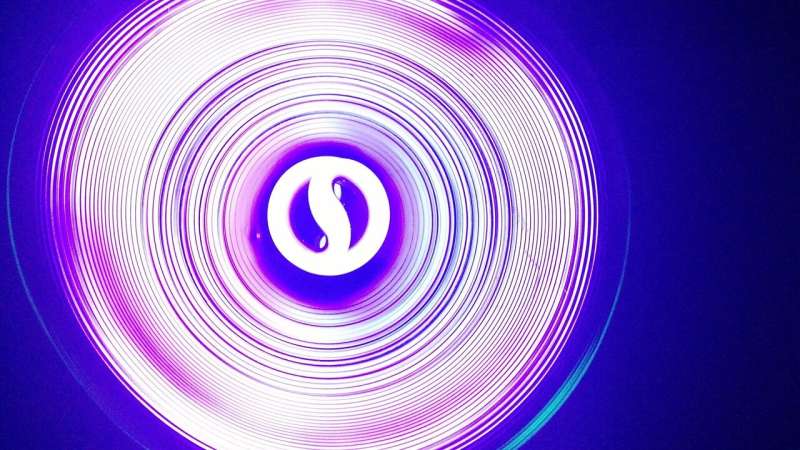
To combat COVID-19 amid supply shortages in 2020, health care facilities across the U.S. resorted to disinfecting personal protective equipment (PPE), such as N95 masks, for reuse with methods such as ultraviolet (UV) light. But questions lingered about the safety and efficacy of these methods and how best to implement them.
Now, in perhaps the most rigorous examination of UV light’s effects on N95 masks yet, researchers at the National Institute of Standards and Technology (NIST) have shown that these masks can be disinfected with little impact on their form or function. In a new study published in the Journal of Research of the National Institute of Standards and Technology, the researchers, with help from federal and private partners, scrutinized UV-exposed N95 masks for traces of virus and looked for changes in the shape of their fibers, ability to filter out aerosols and other properties.
The results represent a key step toward devising UV standards that could have far-reaching benefits in the future.
“Right now, UV technologies are really in their infancy with respect to the health care environment,” said NIST research chemist and senior adviser Dianne Poster, a co-author of the study. “And the data in this paper could be really instrumental in building the foundation for these applications to become more routine.”
N95 masks provide a formidable defense against infectious respiratory illnesses. The “95” in “N95” refers to the mask’s ability to ensnare at least 95% of particles as small as 75 nanometers (billionths of a meter) that may harbor harmful agents like the coronavirus. But despite the N95’s effective design, it was only intended for a single use.
With demand for PPE far outstripping supply when COVID-19 first erupted in the U.S. in 2020, health care workers turned to disinfecting masks and other PPE using a handful of methods, including UV-C light, a relatively common type of UV radiation used in other germicidal applications.
UV-C has been used for decades to rid air, water and surfaces of bacteria and viruses, with the applications backed by scientific research. But with its sudden widespread application toward N95 masks, the technology was catapulted into uncharted territory, where there was little known about how to apply it effectively.
To better understand how UV-C could be used to disinfect N95 masks, NIST partnered with UV-Concepts, a manufacturer of UV-C systems not currently marketed for N95 disinfection, and ResInnova Laboratories, an antimicrobial testing company.
The authors of the new study fastened N95 masks to racks within a UV-Concepts system—an enclosure lined with 19 UV-C lamps and coated in a reflective surface—and blasted them with UV light for three minutes, 10 times each.
The team doused some of the masks with a solution laden with OC43, a human coronavirus and close relative of the COVID-19-causing virus. After the irradiation, they summed up the number of remaining active OC43 viruses to find that the method adequately disinfected the N95 masks throughout their three layers, even inactivating up to 100% of viral particles in some areas.
But N95 masks, disinfected or not, are only as good as their ability to do their job.
“The wavelength of UV-C used for inactivation of a virus is not known to produce chemicals, such as ozone, that could damage the plastic in the N95 masks. But it is still important to check,” said NIST researcher John Wright, a co-author of the study.
The authors ran N95 masks through a plethora of tests to learn whether the irradiation had altered them as a whole and down to the individual fiber. The team viewed the fibers using an imaging technique called scanning electron microscopy, which magnified images of the masks up to 2,000 times or more. Throughout the three layers of both irradiated and nonirradiated masks, the images revealed no significant differences in the fiber size or shape between the groups.
In case the UV affected more than what met the microscope’s eye, the authors looked for potential changes elsewhere.
The authors measured how much the masks resisted air flowing through them to see if UV made the N95s more difficult to breathe in, Wright said. But once more, UV did not appear to make any difference.
The NIST team also examined if the irradiation meddled with the N95s’ filtering ability or their mechanical properties. To determine the former, they directed a stream of salt-carrying aerosols (mimicking the size of exhaled aerosols) at the masks and counted how many flowed through. To help them calculate the latter, they pulled on strips cut from the masks with a machine called a mechanical tester. Yet again, the irradiated masks were unaltered.
In parallel, experts at the CDC’s National Institute for Occupational Safety and Health (NIOSH) also studied N95 masks irradiated in the enclosures. But despite using different methods to investigate some of the same mask traits as the NIST team, and some different aspects such as mask fit, they arrived at the same conclusion.
In the future, researchers and members of the UV industry can use the authors’ data to take initial steps toward understanding how different levels of UV-C radiation affect N95 mask performance and cleanliness, a necessity for standardizing these methods.
What’s more, the study demonstrates the benefits of collaboration when standard methods are limited and there is a need for many experts, capabilities and facilities across disciplines.
“Personally, as a private, independent laboratory, I have found it highly rewarding to be able to work with both a federal agency and a manufacturer on this project,” said ResInnova Laboratories president and chief executive officer, Matthew Hardwick, a study co-author.
Source: Read Full Article